Related Research Articles
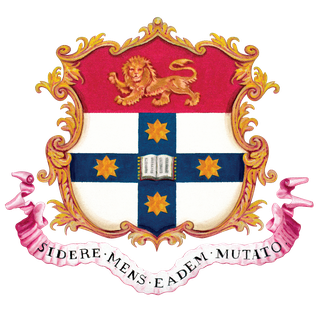
The University of Sydney is a public research university located in Sydney, Australia. Founded in 1850 as Australia's first university, it is regarded as one of the world's leading universities. The university is one of Australia's six sandstone universities. The university comprises eight academic faculties and university schools, through which it offers bachelor, master and doctoral degrees.

Western Sydney University, formerly the University of Western Sydney, is an Australian multi-campus university in the Greater Western region of Sydney, Australia. The university in its current form was founded in 1989 as a federated network university with an amalgamation between the Nepean College of Advanced Education and the Hawkesbury Agricultural College. The Macarthur Institute of Higher Education was incorporated in the university in 1989. In 2001, the University of Western Sydney was restructured as a single multi-campus university rather than as a federation. In 2015, the university underwent a rebranding which resulted in a change in name from the University of Western Sydney to Western Sydney University. It is a provider of undergraduate, postgraduate, and higher research degrees with campuses in Bankstown, Blacktown, Campbelltown, Hawkesbury, Liverpool, Parramatta, and Penrith.

The University of Melbourne is a public research university located in Melbourne, Australia. Founded in 1853, it is Australia's second oldest university and the oldest in Victoria. Its main campus is located in Parkville, an inner suburb north of Melbourne's central business district, with several other campuses located across Victoria.
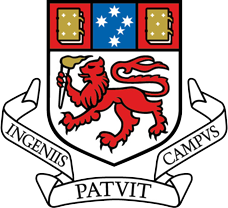
The University of Tasmania (UTAS) is a public research university, primarily located in Tasmania, Australia. Founded in 1890, it is Australia's fourth oldest university. Christ College, one of the university's residential colleges, first proposed in 1840 in Lieutenant-Governor Sir John Franklin's Legislative Council, was modeled on the Oxford and Cambridge colleges, and was founded in 1846, making it the oldest tertiary institution in the country. The university is a sandstone university, a member of the international Association of Commonwealth Universities, and the Association of Southeast Asian Institutions of Higher Learning.

An art school is an educational institution with a primary focus on the visual arts, including fine art – especially illustration, painting, photography, sculpture, and graphic design. Art schools can offer elementary, secondary, post-secondary, or undergraduate programs, and can also offer a broad-based range of programs. There have been six major periods of art school curricula, and each one has had its own hand in developing modern institutions worldwide throughout all levels of education. Art schools also teach a variety of non-academic skills to many students.

Hacettepe University is a leading state university in Ankara, Turkey. It was established on 8 July 1967. By URAP 2019, it is ranked first among the Turkish universities.
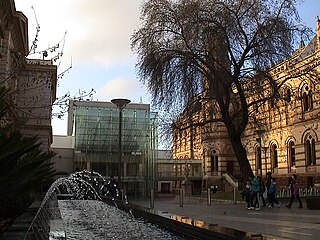
The State Library of South Australia, or SLSA, formerly known as the Public Library of South Australia, located on North Terrace, Adelaide, is the official library of the Australian state of South Australia. It is the largest public research library in the state, with a collection focus on South Australian information, being the repository of all printed and audiovisual material published in the state, as required by legal deposit legislation. It holds the "South Australiana" collection, which documents South Australia from pre-European settlement to the present day, as well as general reference material in a wide range of formats, including digital, film, sound and video recordings, photographs, and microfiche. Home access to many journals, newspapers and other resources online is available.

Alfred Felton was an Australian entrepreneur, art collector and philanthropist.
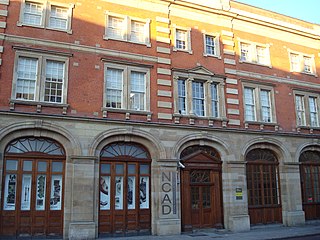
The National College of Art and Design (NCAD) is Ireland's oldest art institution, offering the largest range of art and design degrees at undergraduate and postgraduate level in the country. Originating as a drawing school in 1746, many of the most important Irish artists, designers and art educators have studied or taught in the college. NCAD has always been located in central Dublin, and in 1980 it relocated to the historic Liberties area. The College has around 950 full-time students and a further 600 pursuing part-time courses, and NCAD's students come from more than forty countries. NCAD is a Recognised College of University College Dublin. It is also a member of the European League of Institutes of the Arts.

St John's College, or the College of St John the Evangelist, is a residential college within the University of Sydney.

Carlyle Greenwell was an Australian architect whose houses, designed in the first half of the 20th century, are often heritage-listed. He was also a philanthropist who made bequests to the University of Sydney funding research in Anthropology and Archaeology.
Adrien Albert was a leading authority in the development of medicinal chemistry in Australia. Albert also authored many important books on chemistry, including one on selective toxicity.

Bernard William Smith was an Australian art historian, art critic and academic, considered the founding father of Australian art history, and one of the country's most important thinkers. His book Place, Taste and Tradition: a study of Australian art since 1788 is a key text in Australian art history, and influence on Robert Hughes. Smith was associated with the Communist Party of Australia, and after leaving the party remained a prominent left-wing intellectual and Marxist thinker. Following the death of his wife in 1989, he sold much of their art collection to establish, the Kate Challis RAKA, one of the first prizes in the country for Indigenous artists and writers.
Terry Smith is an Australian art historian, art critic and artist who currently lives and works in Pittsburgh, New York and Sydney.

The University of Queensland Art Museum is the art museum and public gallery of the University of Queensland in the James and Mary Emelia Mayne Centre at the St Lucia campus. The University of Queensland Art Collection is now the second largest public art collection in Queensland. The building was formerly known as Mayne Hall.
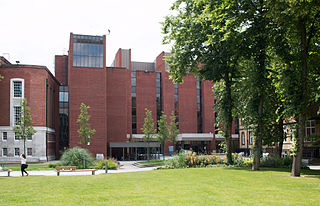
The University of Manchester Library is the library system and information service of the University of Manchester. The main library is on the Oxford Road campus of the university, with its entrance on Burlington Street. There are also ten other library sites, eight spread out across the university's campus, plus The John Rylands Library on Deansgate and the Ahmed Iqbal Ullah Race Relations Resource Centre situated inside Manchester Central Library.
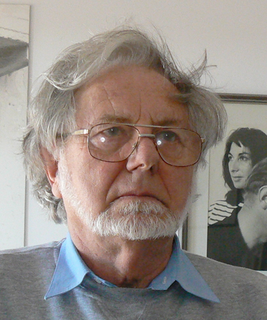
Donald Brook was an Australian artist, art critic and theorist whose research and publications centre on the philosophy of art, non-verbal representation and cultural evolution. He initiated the Experimental Art Foundation in Adelaide and was Emeritus Professor of Visual Arts in the Flinders University, Bedford Park, South Australia.
Dr John Joseph Wardell Power (1881–1943) was an Australian Modernist artist. He studied medicine at the University of Sydney and served as a doctor in the First World War. After the war he left medicine and studied at the Atelier Araújo in Paris and became interested in Cubism and abstract art. He was a member of the London Group and the Comite Abstraction-Creation, Paris. JW Power died in Jersey, Channel Islands in 1943. He left his estate to the University of Sydney where the Power Institute of Fine Arts now bears his name. The Power bequest was the core funding to set up Sydney's Museum of Contemporary Art.
Joan Kerr (1938–2004) was an Australian academic and cultural preservationist. Initially her interest was sparked in preserving the architectural heritage of Australia, but over time her interests spread to art history and Australian culture in general. She taught at many universities throughout the country and was involved in Historical Societies and Preservation Trusts in a variety of the territories. She wrote books on Australia's historic architecture, feminist artists, cartoonists and her major life work was producing the Dictionary of Australian Artists: Painters, Sketchers, Photographers and Engravers to 1870.

John Michael Dwyer, is an Australian doctor, professor of medicine, and public health advocate. He was originally a Professor of Medicine and Paediatrics, then Head of the Department of Clinical Immunology at Yale University. Returning to Australia, he became Head of the Department of Medicine and the Clinical Dean at the University of New South Wales and Director of Medicine at Sydney's Prince of Wales Hospital, the University's major teaching hospital, for over twenty years. In retirement he is an Emeritus Professor of Medicine of the University. He founded the Australian Health Care Reform Alliance, and was the founding president of the Friends of Science in Medicine until 2019. He was appointed an Officer of the Order of Australia for his service to public health.
References
- 1 2 3 "THE POWER INSTITUTE FOUNDATION FOR ART AND VISUAL CULTURE". The University of Sydney. Retrieved 13 February 2013.